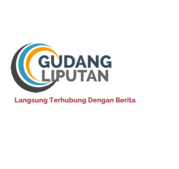- Taylor Rosenbauer's company, RocketAir, has had a four-day workweek since 2023.
- The company's shorter workweek is complemented by a remote work model and integration of AI tools.
- Rosenbauer and his employees use AI to help with data synthesis, project management, and brainstorming.
This as-told-to essay is based on a conversation with Taylor Rosenbauer, the 32-year-old founder and CEO of RocketAir, a design and strategy firm. The following has been edited for length and clarity.
I'm the CEO of a design and strategy firm that formally implemented a four-day workweek to avoid burnout back in 2023. For us, Fridays are considered the weekend.
We've also built our entire company culture around a remote work model. While it might not suit every company or industry, it naturally complements our four-day workweek.
It lets our team of 15 — including full-time employees and independent contractors — skip commutes, avoid unnecessary meetings, and manage their time intentionally, which is essential when compressing a traditional five-day workload into four days.
Having a "small but mighty" team is intentional. It makes it much easier for us to experiment with and adapt to new ways of working, like the 4-day workweek.
The shorter week has forced us to become more efficient as we try to produce the same output in less time. It also naturally pushed us to explore technology — especially AI — more deeply.
We want to use AI to amplify rather than replace
The way we think about leveraging AI is that it allows us to raise the ceiling on what we're capable of as designers. By letting AI tools handle routine, repetitive tasks, our team gets more time to focus on big ideas, strategic thinking, and pushing creative boundaries — areas where humans truly excel.
With less busy work and more brainpower spent on high-impact activities, we'll be able to dig deeper creatively, explore ideas more thoroughly, and bring original concepts to life faster than ever.
Here are a few ways we've started using AI tools to help our work:
1. We use AI tools to synthesize and contextualize data to create smarter design solutions
During the discovery phase of a project, we're ingesting troves of data from clients, including customer research, industry reports, Google Analytics, and user personas.
With AI tools like ChatGPT, I can upload any PDF and ask the tool to give me a list of key takeaways relevant to my business. This manual task would usually take hours and now takes less than a minute.
We can also use ChatGPT to generate a summary of an industry or audience in seconds, even tailoring results with specific parameters or asking follow-up questions. We may need more in-depth research, but it's a good starting point.
2. Our project management and remote collaboration are more robust
We've been using Notion as a hub for client projects; we store all timelines, meeting notes, and working files in a central area. Its AI features allow us to highlight text and instantly create a summary, list of action items, or rewritten text in simpler language. This is particularly useful when our producers need to consolidate client feedback and share specific next steps with copywriters or designers on our team.
Since the team is remote, we often record meetings for those who can't join live. We use Otter.ai to transcribe the dialogue from meetings in real time, create summaries, and pull out action items from conversations. This also helps reduce the number of meetings team members must attend.
3. AI is another brainstorming partner
Tools like DALL-E and ChatGPT are limited when it comes to creating polished work; we wouldn't use these tools to generate a brand mood board or design a UI layout. But we've found they can be useful to get ideas flowing. We check our work by asking ChatGPT to analyze something we've written and point out anything we've missed.
We've also been experimenting with no-code, AI-powered tools like Lovable.dev to bring velocity to the creative process with prompt-based rapid prototyping, to create high-fidelity prototypes that feel like real digital experiences.
Similarly, we're playing around with the latest advancements in AI image generation — Open AI just introduced 4o image generation in late March — for rapid concepting. These tools aren't replacing our creative output, but they're super useful as brainstorming partners, accelerating the early stages of idea generation and exploration.
We'll never rely fully on AI
We're vigilant about the tendency of some AI models to hallucinate or generate inaccurate content, so we never fully rely on them. There's always a human layer of due diligence, whether it's fact-checking research, reviewing competitive analysis, or knowing what will resonate with people.
AI will always be a partner for us, not a replacement for talent. We're focused on raising the ceiling of our creative output and capabilities, and building toward a future where human ingenuity and AI-driven efficiency come together.
For example, we're building our own AI-powered design intelligence platform and our goal is to scale it for middle-market and enterprise clients who have massive amounts of disparate data but haven't yet brought it effectively into their creative processes.
In order to win in the market, brands need to create an emotional connection with their audience. That's the part we'll never fully outsource to AI. Novel ideas and culturally relevant strategies will always rely on humanity.
Do you have a story to share about your experience with a four-day workweek or another unconventional schedule? Contact this editor, Jane Zhang, at [email protected].
















